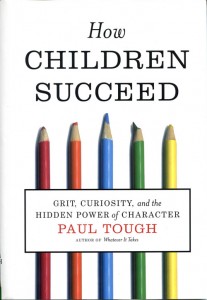As online increasingly enters the higher education mainstream, there have been many articles and reports documenting best practices in this arena. Institutions who are novices in implementing online learning can tap the wealth of experience from the “early adopter” universities with well over 15 years experience, and in some cases, more than 20 years of online teaching. In this regard, it’s worth noting that the University of Wisconsin celebrates its excellent 29th Conference on Distance Teaching and Learning this August. I’ve attended several of these events over the years and can report there is a wealth of research and actionable strategies for making online programs successful.
With over two decades of experience in online learning, one must question why any college would proceed with a hybrid/online program without first consulting those in the field. There are many practitioners with experience eager to share their expertise. Even so, I see many colleges embark on their online journey in an entirely unplanned, unresearched, and unprepared manner. The question is why. This post offers some ideas.
Lack of Understanding
Colleges and universities are complex enterprises. Presidents and administrators are under much pressure to improve student retention and success (however that is measured) while satisfying faculty needs and balancing the imperative for research and scholarship. With many constituents to serve and multiple mandates, it comes as no surprise that online learning may not be a high priority. Many presidents suffer from the same misunderstanding prevalent amongst their faculty that online learning is “second rate” and “not for our students.” These beliefs set the tone for online implementation at that college, and can thwart any real progress in this area.
Without substantial support for online learning by college leadership, online efforts will succumb as dedicated staffers attempt to do the heavy lifting inherent in changing an institution’s culture, often resistant to change. In most cases, these efforts at best will produce some sporadic or tentative successes while the opportunities to transform the mode of teaching at that institution flounders. Considering that online learning has been the largest trend in higher education in the past decade, a college can no longer afford leadership without an informed understanding of online learning.
Lack of Vision and Strategic Plan
Real leadership has an understanding of the potential for online and how it supports the mission of that institution (i.e., access and quality). Moreover, that leader also needs to possess the skills to nurture strategic planning for online learning that is more than empty rhetoric or a dead, easily discarded planning document. As an example, I can point to Joel Hartman, University of Central Florida’s Vice Provost for Information Technologies and Resources, who has won numerous awards for his university’s online implementation. I have had the pleasure of attending a workshop of his on “Planning Online Programs” several years ago. Mr. Hartman possesses the talents of being a visionary with strategic planning skills. Over the course of several years, he has transformed teaching and learning at that institution, while dramatically increasing online enrollment and revenues. Moreover, his position within the university allows him to lead a team that does both planning and implementation for online learning. The results speak volumes for what an informed leader can deliver with a real vision and strategic plan. (link Video of Joel Hartman)
Lack of Institutional Support
Related to the previous points, institutional support is critical to achieving anything substantive within a university. This support not only includes the administration using its influence to overcome obstacles and barriers to online adoption (e.g., resistant faculty governance), but also for allocating the necessary manpower and faculty incentives so initial efforts can have a reasonable chance of success. Assuming that the existing faculty center, for example, can achieve online learning at a college without instructional technologists, instructional designers, media specialists or even a director of online learning is, simply put, a pipe dream.
Lack of Quality Control
It is arguable that even in traditional courses, there is little “quality control,” but in online offerings the lack of such controls spells trouble. Student evaluations and instructor observations may be the minimum requirement in a face-to-face class, but is woefully inadequate for an online class. Issues like course organization, instructor accessibility and responsiveness, use of interactive tools for learning, and clarity of explanations for assignments all carry greater importance in a fully online class. The problem is that when hybrid/online programs develop (often with little thought to quality control by the college), students are presented a range of online experiences that may detract from the success of these initiatives. Moreover, once the proverbial cat is out of the bag, faculty may resent oversight of “their” online courses, even if it promises better quality to students. Ideally, quality control needs to be considered at the outset of online development—although it rarely is.
Lack of Policies and Procedures
Outside of providing faculty development for their online efforts, many colleges spend almost no time thinking whether institutional policies and procedures need to be addressed for online learning. Joel Hartman, referred to earlier in this post, argues that such thinking is critical to the success of any online program. Alas, often the policy makers don’t realize this issue until problems start to occur. Some examples are:
- Faculty complain that their classes are too large (no student maximum for online courses)
- Department chairs struggle with reviewing adjunct faculty performance in online courses (no procedure for evaluating online instructors)
- Administrators complain about greater student dropouts in online classes (no student preparation for online, no prerequisites for taking online classes)
- Students complain that their online instructors are doing a poor job (no policies regarding course quality, or mandatory instructor training/certification).
The fact that such problems (and many others) can be addressed by formulating policies and procedures prior to the rollout of online programs seems like a well-kept secret to many administrators.
Lack of Faculty Buy-In
Academia by its nature is a slow-changing beast made even more so by faculty governance mandates that resist any change thought to be a threat to faculty. Online learning, for many instructors, is seen as a threat that must be abolished (too late for that) or, at least, slowed down (let’s say “no” at first, then study the issue). Of course, many tenured faculty have embraced hybrid/online learning and are greatly dismayed when their colleagues have such a jaundiced view of online. Even so, many studies clearly show that faculty resistance is the major impediment to online adoption within institutions (see references below). Furthermore, faculty who have never taught online are the most resistant. I have heard rather absurd resolutions passed in Faculty Senates that consider “hybrid courses” as experimental in nature and therefore requiring Senate approval after a 2-year trial. These and other stalling tactics are a major reason that institutions with a long tradition of tenure and unions within the professoriate are the slowest to embrace online learning and indeed, try to subvert it whenever possible.
Lack of Institutional Capacity / Expertise
These days, MOOCs (massive open online courses) and other online developments are very much in the news. Consequently, everyone seems to have an opinion about it, or think they know a great deal about online. To implement a successful online program requires real experience and knowledge of the field. It may possibly require an experienced director to guide an institution’s online efforts, and/or a committee dedicated to doing research on best practices from other schools literally decades ahead in their online development. In my experience, many experts within institutions with mature online programs are more than willing to share their expertise with those colleagues new to online. However, many colleges starting online programs tend not to consult with real online experts, but instead give this authority to those who lack a real understanding of online who are suddenly thrust into a role involving online leadership. The expression “incompetence reigns supreme” perfectly describes the consequences of such policies. Ironically, on such a campus, there may exist a real expert regarding online teaching and learning, possibly one who has followed the field for years and may even blog about an online vision for their institution. Rest assured, that individual will be overlooked when such planning occurs and will operate in relative obscurity while the faux experts weigh-in.
In conclusion, there is little reason that a new online program cannot learn the lessons of institutions that have treaded this well-worn path. The pitfalls described above are avoidable. With the right people and support structures in place — and a real vision and plan for online learning — a college has a fighting chance to successfully grow their online programs.
References:
Allen, I.E., Seaman, J., Lederman, D., & Jaschik, S., (August, 2012), “Digital Faculty: Professors, Teaching and Technology, 2012,” Inside Higher Ed and The Babson Group. Retrieved from: http://www.insidehighered.com/news/survey/digital-faculty-professors-and-technology-2012
Bacow, L. et al, (May 2012) “Barriers to Adoption of Online Learning Systems in U.S. Higher Education,” ITHAKA S+R, Retrieved from: http://www.sr.ithaka.org/research-publications/barriers-adoption-online-learning-systems-us-higher-education




